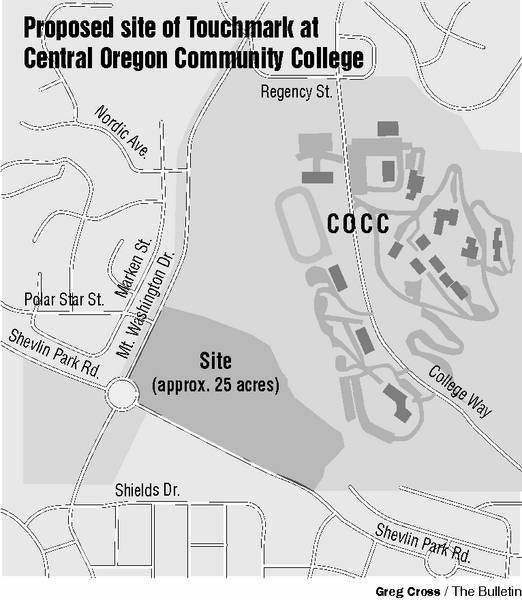Retirement housing, COCC may share land
Published 5:00 am Wednesday, May 31, 2006

- Retirement housing, COCC may share land
A possible collaboration between Central Oregon Community College and a retirement community could turn the college campus into a 197-acre classroom for intergenerational learning.
On May 9, a committee made up of three COCC board members with real estate experience selected a concept by retirement company Touchmark to build a 25-acre community for seniors on COCC’s campus. The development would be southwest of the main COCC campus, at the corner of Mt. Washington Drive and Shevlin Park Road.
Trending
”It’s a unique opportunity for a progressive development in a public-private collaboration with COCC,” said Tom Biel, executive vice president of Touchmark.
The Beaverton-based company operates resort-style retirement communities in eight states and Canada. It also operates Touchmark at Mt. Bachelor Village, a nearly 25-acre site in southwest Bend that opened in 2003.
If Touchmark and COCC do reach an agreement, the final result could be a mutually beneficial environment: Students could work and intern at the retirement community, while residents could participate in college activities or volunteer.
COCC was looking for a way to get financial returns back on some of its undeveloped land, and in February it put out a call for idea submissions, said Ron Paradis, director of college relations. It advertised for ways to use the land and it liked Touchmark’s concept the best.
But the two have not reached a formal agreement. Before anything can move forward, three things need to happen, Paradis said. First, both sides need to meet and make sure they can agree on specifics, such as how they would divide finances. Second, they will have public forums allowing neighborhood residents to offer input. Third, the city of Bend must approve zoning and other aspects of the project. The college board would then make a final decision.
Touchmark would probably build single-family homes, a grand-lodge style community center where residents would dine and common areas. The two sides will meet over the next several months to see if they can reach an agreement. If it’s a go, it would take seven to eight years before the project would be completed, Biel said.
Trending
A financial agreement between the two could involve Touchmark using college land and sharing its revenue stream.
”Most likely it would be a land contribution to a business partnership,” Biel said.
Even if Touchmark builds on the COCC land, officials said there will be plenty of room to expand the campus. Back in 1964, when the college opened, the west slope of Awbrey Butte was 155 acres of prime deer-hunting ground flecked with ponderosa, juniper and lodgepole trees. The college has added on to those original 155 acres throughout the years to prepare for growth. But even as it expands, most of the college’s new buildings remain close to the original cluster.
In the future, new buildings will be built upward instead of outward, said Jim Jones, vice president and chief financial officer. A vertical rather than horizontal approach leaves plenty of room to expand on the main 65 acres of campus. The board realized they could leverage that land to offset the consistently tightening budget belt. The college expects to get less and less money from the state in coming years, and ”the land was not providing any current income,” Jones said.
The college nearly collaborated with the city to build a performing arts center and with the Bend Metro Park and Recreation District to build an aquatic and fitness center. Both of these proposed collaborations fell through, however.
”So a couple things we had that we thought we could partner with the community on, they said, ‘We’re going to go somewhere else.’ Which is fine,” Jones said.
Coming up blank on other options, the college put out advertisements asking developers to propose ideas for ways in which they could develop the land.
They decided a successful proposal would meet the following criteria: offer a financial benefit to COCC; fit in well with the neighborhood; provide opportunities for student education and employment; be compatible with the university; have minimal impact on city infrastructure; offer opportunity for faculty to get professional development; and be environmentally sensitive.
They received four concepts, including Touchmark’s. The others were from Northwest Development Solutions, CenterCal Properties LLC and Three Pines Development.
Biel said Touchmark was interested because he felt it would be a long-term plan that would be well suited for both sides. Plus, he said, the company has done similar partnerships in other locations with good results.
”We’re not just a typical developer that builds, leases up and moves on to the next project. We’re here to operate for many decades,” Biel said. ”We’re more than just bricks and sticks.”
He said a big part of Touchmark’s culture is a life-enrichment program that emphasizes health and fitness, activities and lifelong learning opportunities. Residents could benefit by attending lectures, participating in school activities or even volunteering at the college.
”What an opportunity for lifelong learning, to be adjacent to a college,” Biel said. ”We’ve got residents who are really excited about the interplay between the two.”
Meanwhile, students could benefit from internships or job opportunities, Paradis said. Culinary arts students could work or do internships cooking meals for residents, for instance, or outdoor recreation students could lead hikes.
”I really see this as an opportunity for a rich, intergenerational experience,” Biel said. ”I think it was Andy Rooney who said, ‘The best classroom was at the foot of an elderly person.’”








